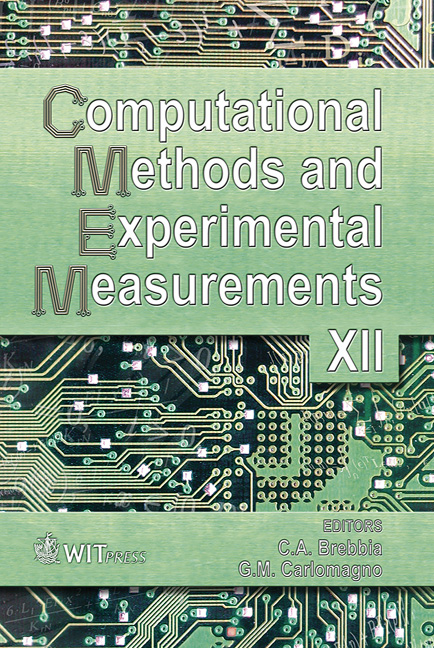Study On The PH-value Method For Ultrasound Cavitation Effect Measurements
Price
Free (open access)
Transaction
Volume
41
Pages
7
Published
2005
Size
423 kb
Paper DOI
10.2495/CMEM050191
Copyright
WIT Press
Author(s)
F. Xinnan, Z. Changping, S. Minglei, H. Shichuan & Z. Jia
Abstract
Many power ultrasound applications are based on ultrasound cavitation. Because of the complication of the ultrasound cavitation reaction, it is difficult to make a direct study on the cavitation course. At present the study on ultrasound cavitation is mainly through measuring the various effects it brings, where the TA fluorescence method and the electricity method are relatively effective methods. This paper adopts a pH-value measurement method to study the ultrasound cavitation effect in a reverberation field and a traveling wave field. Comparing the result of the pH-value measurement method with that of the fluorescence method and the electricity method, we found that they are similar. In consequence, it proves that the pH-value method is another effective method to study the sound cavitation effect. Furthermore, another experiment on bi-frequency irradiation enhancement effect is conducted and the experiment result measured by the pH-value method which is compared with the measurement result of the same experiment adopting the electricity method to further prove the pH-value method’s feasibility. The pH-value method is characteristic of many merits. Firstly, compared with the TA fluorescent method, it is simpler and easier. Secondly, because it can adjust the temperature grade according to the temperature of the sample, the pH-value method reflects the objective laws of the cavitation effect more effectively than the electricity method when the temperature of a sample changes in a large range. Keywords: pH-value, reverberation field, traveling wave field, measuring method.
Keywords
pH-value, reverberation field, traveling wave field, measuring method.





